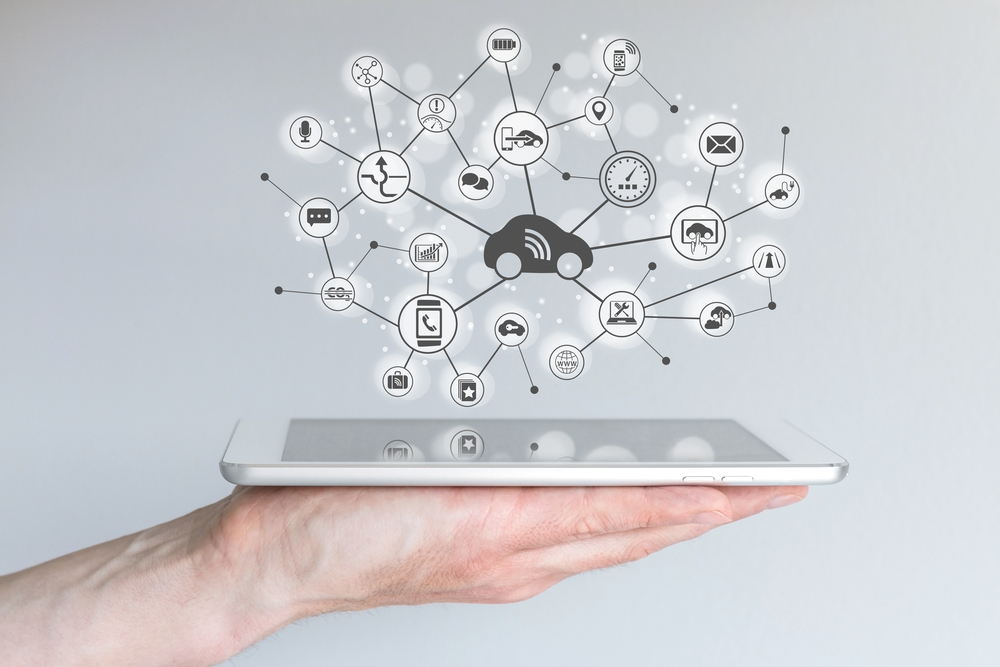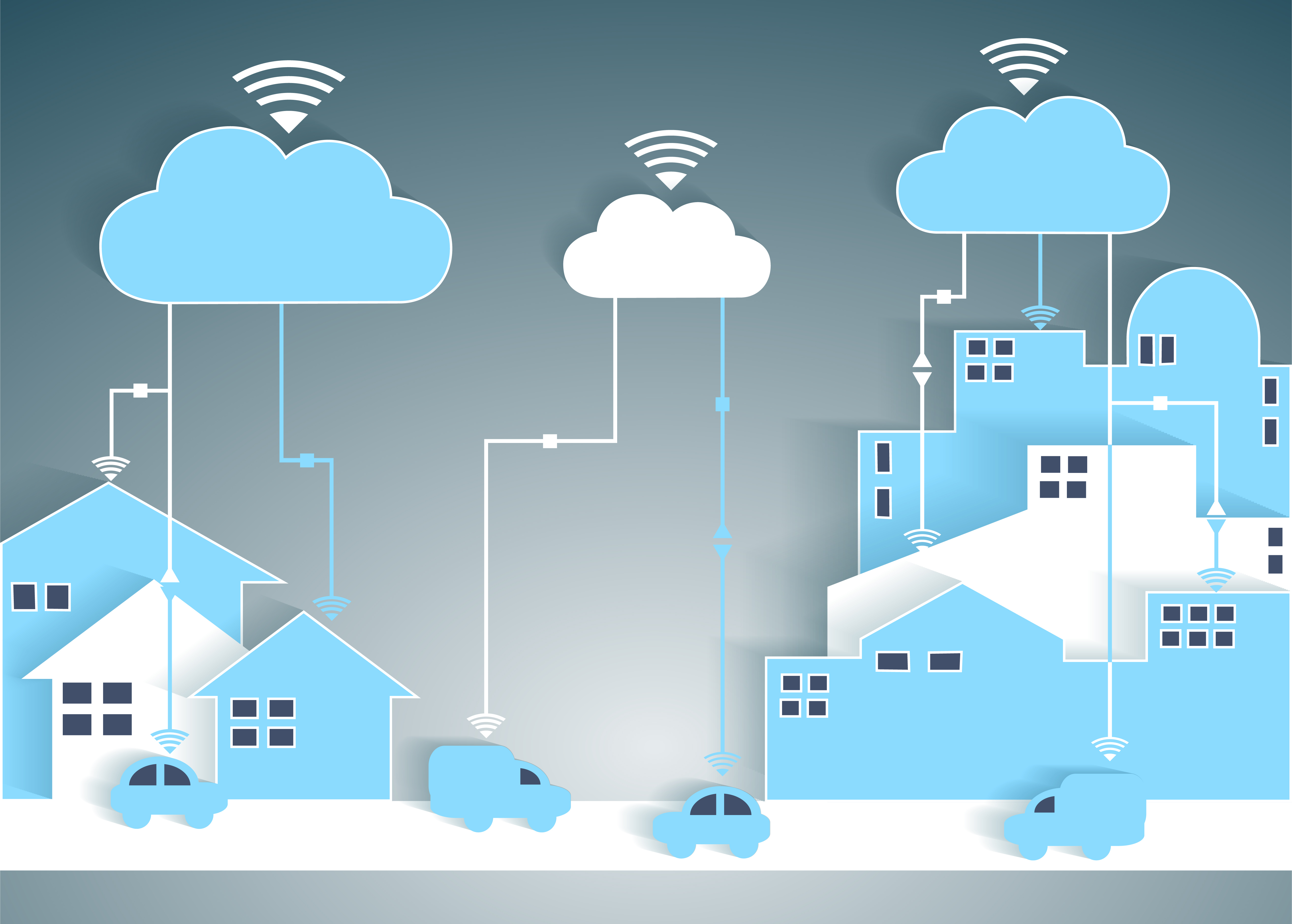Life on the open road – connecting the car to the home

Andrew Lee, head of Market Intelligence and Analysisfor Octo Telematics
The Internet of Things is increasingly meaning that, far from simply being for checking emails or browsing Amazon, the internet is becoming a part of our everyday lives, even those that are ‘offline’. Far more everyday objects are now connected to the internet – many of these being home appliances.
One example is the smart fridge, which is equipped with cameras to monitor your food supply. When low on milk, the fridge sends an alert to your smartphone with the option to reorder the item. Another is wireless speakers, which can be controlled through an app to play music throughout the home. Smart sensors play a big role – installed in a discrete location, they monitor household comings and goings.
The problem is that all these devices work in silos, and consumers end up using endless amounts of apps to control them all. What’s missing is a central hub that controls and monitors all systems in real time. This is where the connected car comes in. In the future, the car will connect with ‘home’ apps so that it will feel like you are never actually leaving home, says Andrew Lee, head of Market Intelligence and Analysis for Octo Telematics.
In fact, we seem to rarely leave our cars anyway. According to the Department for Transport’s Road Use Statistics Great Britain 2016 report, around 64% of personal trips are made by car. The same report shows that 73% of us hold driving licenses and 76% of households have access to a car. Add to that the 84% of people in England that travel by private car at least once or twice a week.
As we’re going to be in our cars so much, it makes sense to be able to coordinate the non-car aspects of our lives from there. With most modern cars being equipped with telematics and other systems to connect to SatNavs and eCall or bCall systems (as well as being the second-most expensive items we’re ever likely to buy), the infrastructure is there to get more value for money. But how would it work?
If someone is going on a business trip then there’s a host of different arrangements that need to be coordinated. These can all be handled by the connected car. If the person has a flight that leaves at 10am, they should be at the airport by 8am to check-in. They may actually have to wake up at 6am to get on the road in plenty of time.
However, if there’s an accident on the road, then plans need to change. This is the connected car’s job. It will constantly monitor the route to confirm journey times. However, the driver still needs to reach the airport at the same time. But, in order to achieve this, they may need to be up at 5am instead of 6am. Understanding that more time is needed, the car will send an alert to set the alarm clock for earlier. The car will then regulate other devices, switching on the heating and hot water to help get the day started, and waking up other appliances.
En route to the airport, the car may find out that the airport carpark is full. Fortunately, it can provide alternative parking options and locate a secure carpark with plenty of spaces. The car will then automatically pre-book a parking bay, and redirect there. Simply by using the car as a hub to control everything, the business trip has had a stress-free start, despite the potential for delays.
But the problems may not end there. On the way home, the flight could be delayed. The car would be able to monitor flights and expected arrival times and automatically extend its parking slot to meet the plane’s arrival, setting a domino chain into motion. The heating in the house would be set to come on later, a food order could be postponed or cancelled – a favourite TV programme could even be recorded. If the trip is delayed overnight, the car could set the lights of the house to come on in a pre-set pattern, deterring burglars.
The car could go a step further, using the information collected from all the home sensors, applying data analytics and then transforming it into actionable intelligence. Data collected from the smart fridge could then be shared with advertising companies to promote products according to your preference, for example.
 There are obvious benefits for insurers. Gone would be the days of sitting in traffic and getting frustrated. There would be plenty of time for journeys, reducing the need to try and switch in and out of lanes and drive dangerously to make up time. Planning and booking a safe, secure parking bay will also reduce the danger of car theft, especially if cars are left overnight at stations or airports. There’s even a trickledown benefit for home insurers. A more efficient approach to heating will mean less wear and tear on boilers and a reduction in the risk of burst pipes in winter.
There are obvious benefits for insurers. Gone would be the days of sitting in traffic and getting frustrated. There would be plenty of time for journeys, reducing the need to try and switch in and out of lanes and drive dangerously to make up time. Planning and booking a safe, secure parking bay will also reduce the danger of car theft, especially if cars are left overnight at stations or airports. There’s even a trickledown benefit for home insurers. A more efficient approach to heating will mean less wear and tear on boilers and a reduction in the risk of burst pipes in winter.
More directly, the data would be shared with policy providers – whether it’s your home or car insurance provider. Once insurers fully understand the vital role the car can play in the connected ecosystem, they will be able to take a more targeted approach. This might include better assessments, improved processes, and more efficient operation – pricing the risk more accurately and offering adjusted premiums to reward drivers that are taking full advantage.
In addition to the cost saving benefit of not paying out thousands of pounds in insurance claims. Of course, the connected car itself would be providing them with a full range of driver behaviour data – just to make sure.
There may still be some way to go before our cars are playing this central role in our home life as well as driving life. However, with increasing advances in connectivity through the Internet of Things, the day in the life described above may not be as science fiction as it sounds. Using our phones to control things around us is already a reality – we’re not far from letting our cars do it automatically.
The author of this blog is Andrew Lee, head of Market Intelligence and Analysis for Octo Telematics
Comment on this article below or via Twitter @IoTGN
